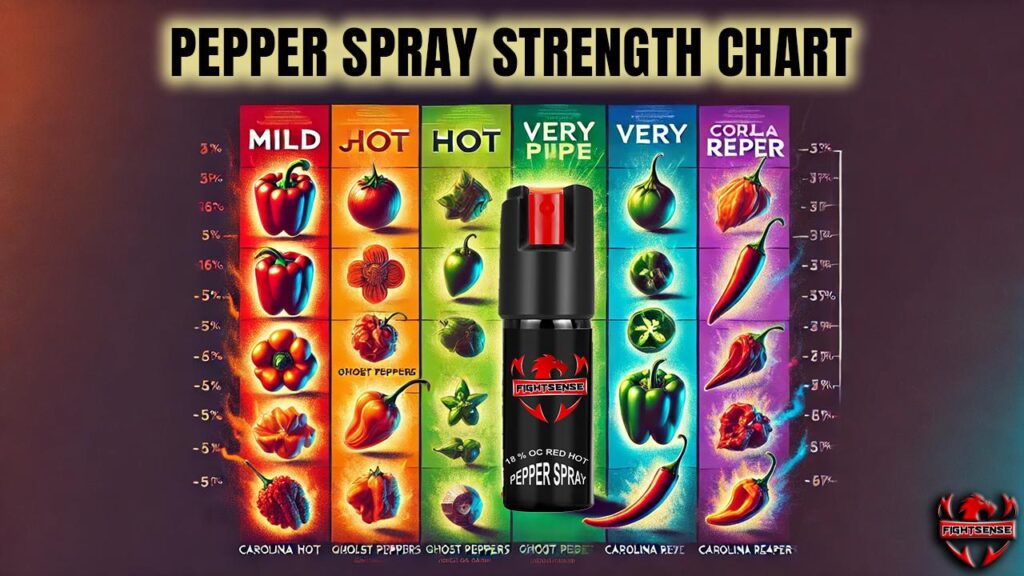Table of Contents
- Understanding the Chemical Composition and Concentration of Capsaicinoids
- Impact of Spray Delivery Mechanisms on Effectiveness and Range
- Environmental Conditions That Alter Pepper Spray Performance
- Best Practices for Storage and Handling to Maintain Maximum Potency
- Future Outlook
Understanding the Chemical Composition and Concentration of Capsaicinoids
At the core of pepper spray’s effectiveness lies its active ingredients: capsaicinoids. These naturally occurring compounds, primarily capsaicin, are responsible for the characteristic fiery heat of chili peppers. Chemically, capsaicinoids are a group of alkaloids that interact with sensory neurons, triggering intense burning sensations and inflammation upon contact. Understanding the exact chemical makeup is crucial, as subtle variations in the molecular structure can influence both the onset speed and duration of the spray’s incapacitating effects. Manufacturers often measure capsaicin concentration in Scoville Heat Units (SHU), giving insight into the pepper spray’s overall potency.
Concentration levels typically vary from as low as 0.18% to over 1.0% in some commercial formulations, significantly impacting how quickly and severely a target experiences irritation. Factors affecting these concentrations include the purity of the extracted capsaicinoids, storage stability, and even the solvent base used in the spray. High-quality sprays balance these variables to ensure consistent delivery of pain without posing permanent harm. To better grasp these variables, consider:
- Purity and type of capsaicinoids extracted from pepper varieties
- Concentration percentage relative to the total solution
- Carrier compounds and solvents that affect dispersion
- Formulation stability during manufacturing and shelf life
Impact of Spray Delivery Mechanisms on Effectiveness and Range
The design and technology behind how pepper spray is delivered play a crucial role in its overall performance. From stream sprays to foggers and gel formulations, each mechanism has distinct advantages affecting both the distance it can reach and how precisely it targets the threat. For instance, a narrow stream delivery often offers a greater range and accuracy, making it ideal for situations where precision is vital. In contrast, foggers disperse a wider cloud that can cover a larger area but might sacrifice distance and accuracy, impacting its efficiency in windy conditions.
Moreover, ergonomics and trigger mechanisms greatly influence how quickly and effectively a user can deploy pepper spray under stress. Comfortable, easy-to-activate triggers reduce reaction time, while locking mechanisms prevent accidental discharges. Its portability also matters – compact devices are more likely to be carried and accessible in emergencies. Below are key factors connected to spray delivery that influence effectiveness:
- Spray pattern – stream, cone, fog, or gel consistency
- Range – distance the spray can travel reliably
- Trigger control – ease and speed of deployment
- Wind resistance – spray drift and target accuracy outdoors
Environmental Conditions That Alter Pepper Spray Performance
Pepper spray’s effectiveness can significantly fluctuate depending on external elements. Humidity, for instance, plays a critical role; high moisture levels in the air can cause the spray to disperse more rapidly, reducing its immediate impact and range. Conversely, dry conditions tend to allow the spray to maintain a more concentrated and forceful trajectory. Additionally, wind speed and direction are crucial factors-spraying against the wind may blow the formula back on the user, while a strong tailwind can dangerously extend its reach beyond the intended target.
Temperature variations also influence the potency of pepper spray. In extremely cold environments, the spray may become less volatile and fail to aerosolize efficiently, compromising its ability to deliver the active capsaicin effectively. On the other hand, high heat can cause the pressurized canister to expand, sometimes leading to malfunction or premature discharge. Understanding these conditions not only helps users optimize the spray’s deployment but also underscores the importance of selecting formulas and packaging designed to withstand diverse climates.
- Humidity – Affects spray dispersion and intensity
- Wind – Determines the direction and safety of spray use
- Temperature – Impacts chemical stability and canister performance
Best Practices for Storage and Handling to Maintain Maximum Potency
To ensure your pepper spray remains effective when you need it most, proper storage is critical. Keep your canister in a cool, dry place away from direct sunlight or extreme temperatures, as heat can degrade the chemical compounds and reduce its spray power. Avoid leaving the spray in vehicles during hot summer days or freezing environments in winter. Additionally, storing it in a location with minimal humidity helps prevent corrosion of the metal components, which could compromise the integrity of the spray mechanism over time.
Handling protocols also play a vital role in maintaining potency. Regularly inspect your spray for any dents, leaks, or damage that could cause functional failure. Shake the canister gently every few months to keep the active ingredients well-mixed, but avoid excessive agitation which might put unnecessary pressure on the container. When carrying it on your person, use holsters or secure pockets designed for pepper spray to prevent accidental discharge or exposure to friction. Implementing these simple but effective techniques can prolong your spray’s reliability and ensure optimal performance during emergencies.
Future Outlook
In summary, understanding the key factors that influence pepper spray potency and strength is essential for both manufacturers and users alike. From the chemical composition and concentration of capsaicinoids to the spray delivery mechanism and environmental conditions, each element plays a critical role in determining the overall effectiveness of pepper spray. By staying informed about these variables, users can make smarter choices when selecting a product that meets their personal safety needs. Ultimately, knowledge is power-empowering you to maximize protection while using pepper spray responsibly and effectively.Check Our Other Blogs
- StunGun – Your Trusted Source for Stun Guns, Laws, and Self-Defense Tips
- PepperSprayLaws – Your Trusted Resource for Pepper Spray Information
- StunGunLaws – Your Trusted Guide to Stun Gun Legality and Safety




